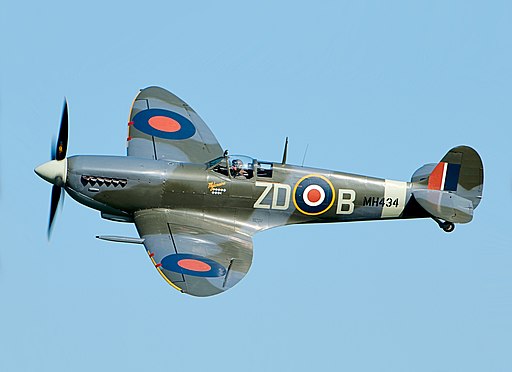Throughout aviation history, few aircraft are as universally admired or instantly recognizable as the Supermarine Spitfire. Known for its distinctive elliptical wings and streamlined design, the Spitfire is more than just a symbol of British resilience and technological ingenuity during World War II. It served a variety of roles, some of which may be surprising.
Fighter Superiority
First and foremost, the Spitfire was a fighter aircraft. Its primary role was to intercept and engage enemy aircraft in air-to-air combat. Its potent armament, composed of machine guns and, later, cannons, combined with its agility and speed, made it a formidable adversary for any enemy aircraft. The Spitfire’s role as a fighter is most famously exemplified in the Battle of Britain (1940), where it, along with the Hawker Hurricane, helped to repel the German Luftwaffe’s intense aerial onslaught.
Reconnaissance Missions
Less commonly known is the Spitfire’s role in photographic reconnaissance. Stripped of their weapons to increase speed and range and often painted in a pale blue or pink camouflage for sky-blending, these Spitfires would fly high-altitude missions over enemy territory. Their objective was to photograph enemy installations, troop movements, and other strategic targets. The photos they took were crucial for intelligence and planning purposes. Their high speed and ceiling made them challenging targets for enemy aircraft and anti-aircraft fire.
Training Aircraft
After World War II, many Spitfires were relegated to secondary roles. A number of them were used as advanced trainers for aspiring pilots. With its responsive controls and high performance, the Spitfire was an excellent tool to hone pilots’ skills, preparing them for other high-performance jet aircraft.
Carrier-Based Operations
The Seafire, a naval variant of the Spitfire, served on Royal Navy aircraft carriers. The Seafire was equipped with an arrestor hook for landing on carriers and was reinforced to withstand the impact. They provided air cover for naval operations and were instrumental in various battles, including the Invasion of Sicily and the Pacific Theatre operations.
Symbol of Remembrance
Today, the Spitfire is an iconic symbol of World War II and is revered for its crucial role in securing victory for the Allies. Many Spitfires have been meticulously restored and are used in flypasts and air shows, serving as a powerful reminder of their historical significance. Some Spitfires are even utilized in “warbird” experiences, where civilians can experience a flight in this iconic aircraft.
The Spitfire was far more than a weapon of war. It was an instrument of defense, an eye in the sky, a trainer for heroes, and a symbol of national spirit. Its versatility and outstanding performance cemented its place in history as one of the most influential aircraft of the 20th century. Today, the Spitfire continues to inspire, reminding us of a time when the destiny of nations was contested in the skies above.
For more insights into the Spitfire and other important military aircraft, visit Aces In Action. Here, you’ll find a relic plaque by Craig Tinder that includes both an illustration and a relic of a Spitfire that came from a large aluminum panel from the port wing between ribs 14-17.
WWII Supermarine Spitfire Relic Plaque – Full Color 8″x10″ by Artist Craig Tinder
This framed canvas Fine-Art Print autographed by Artist Craig Tinder depicts a highly detailed and technically accurate profile of the Spitfire flown by legendary aviator Douglas Bader. Each print includes an actual, embedded relic from a Supermarine Spitfire.





Share:
Which is better – the Cobra or the Apache Helicopter?
Ballistic Fear, the story behind "Aggregat 4"